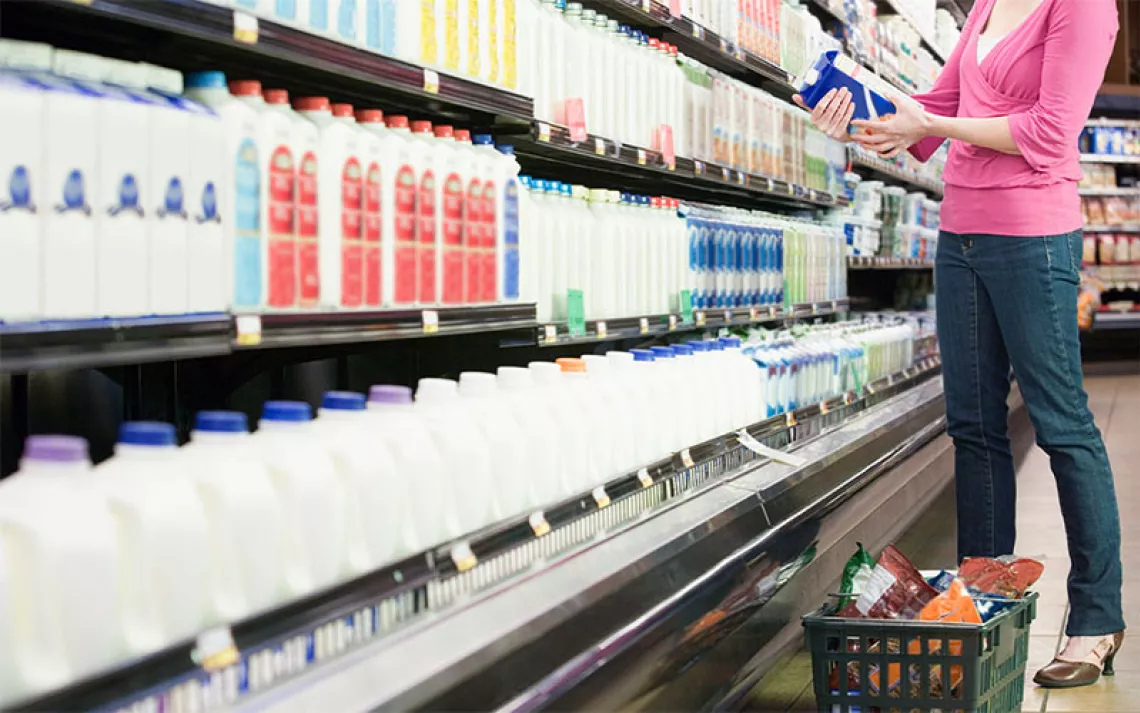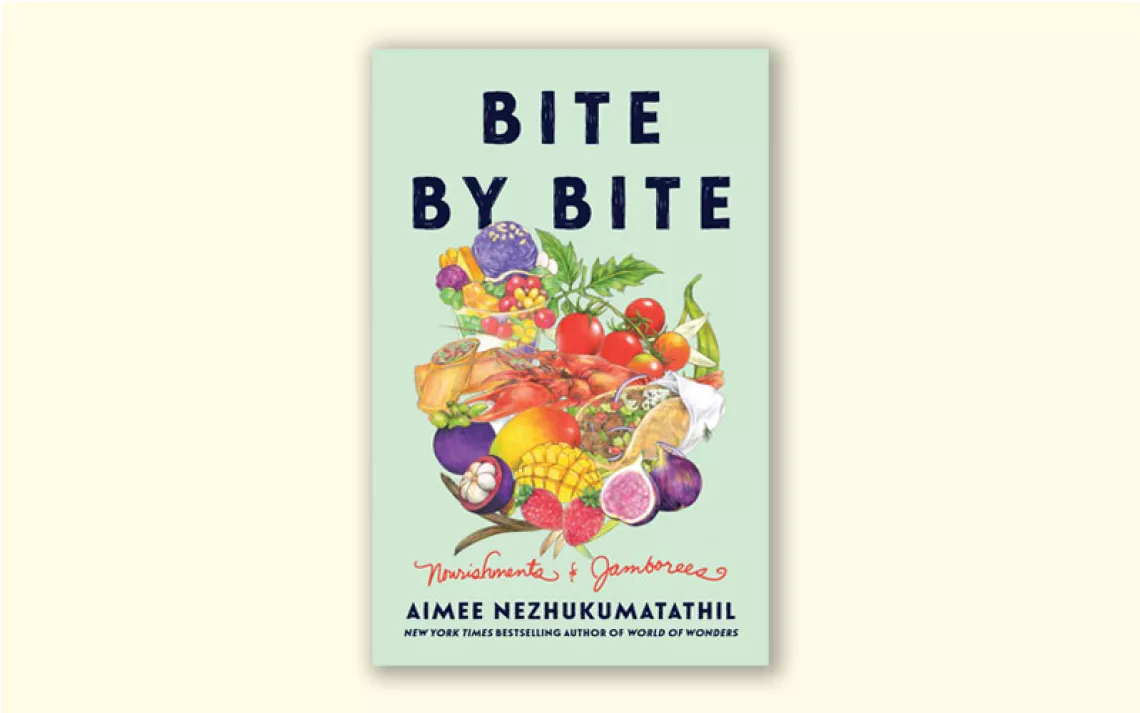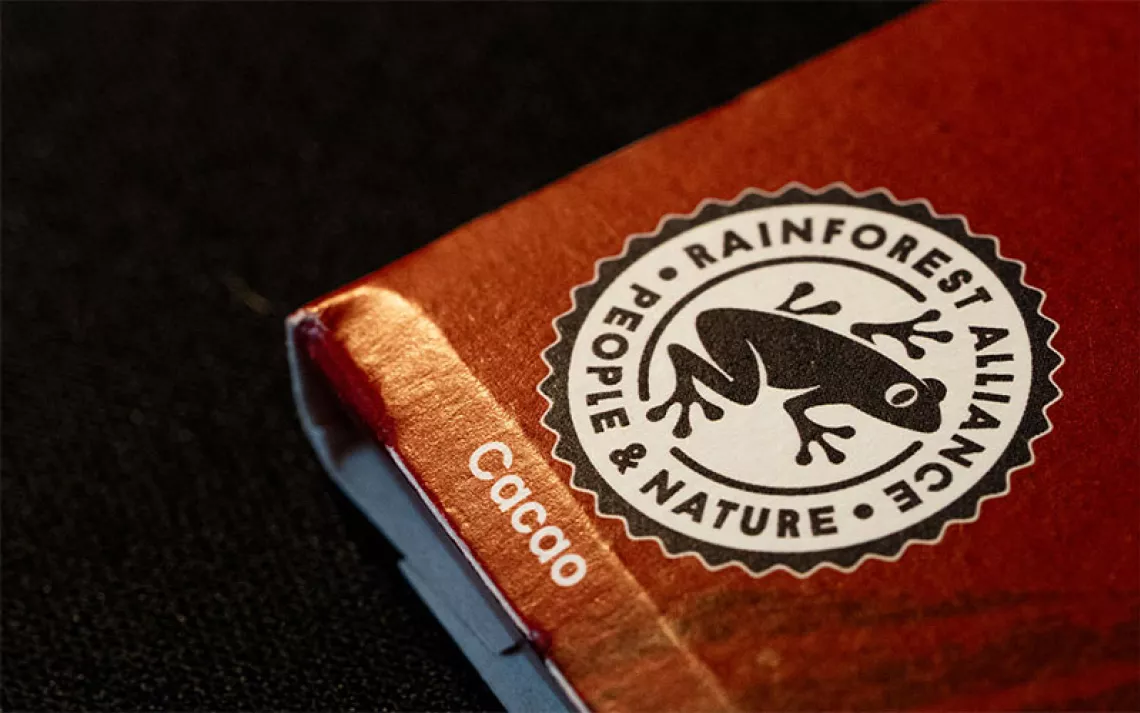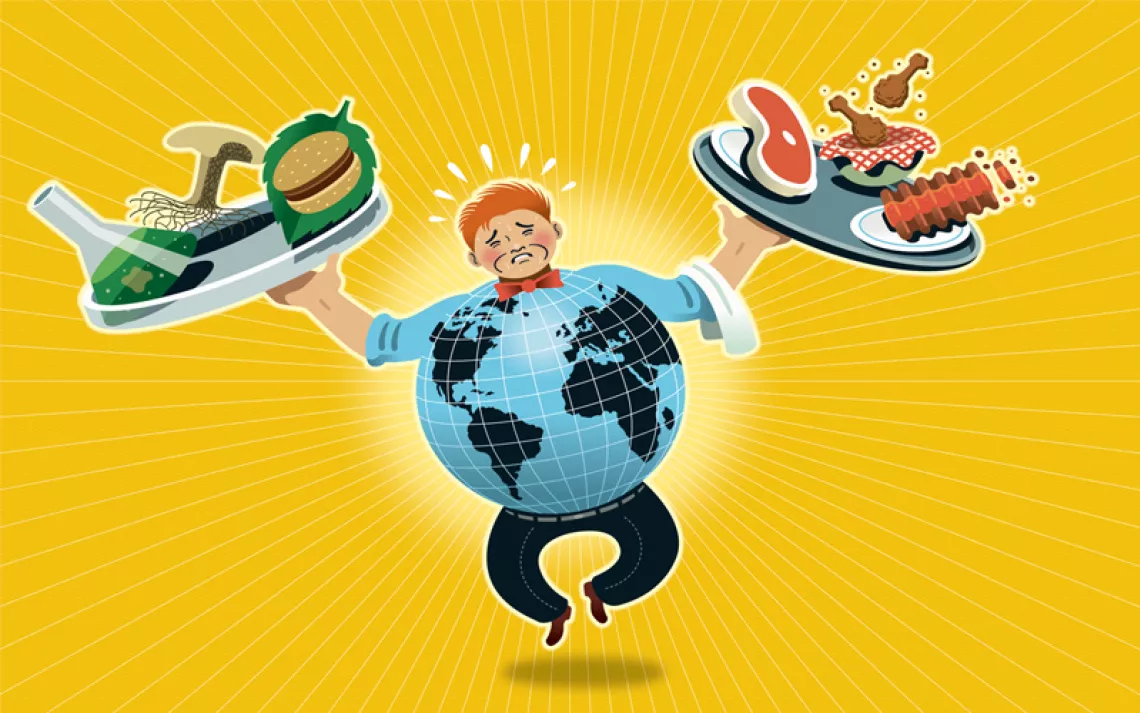Harvesting the Sky
A California distiller is turning San Francisco’s fog into sustainable vodka

Caley Shoemaker | Photo courtesy of Hangar 1
It might seem like the stuff of science fiction, but in some of the world’s driest corners, engineers have found a way to get water to people by wringing it out of the air. How? By capturing fog.
A collection of water droplets suspended in the atmosphere, fog exists outside of regular precipitation cycles. Which means that one viable solution to threatened water supplies on an increasingly drought-threatened, overcrowded planet lies within those gray, gloomy, oddly beguiling folds—a cubic meter of which contains anywhere between 0.05 and 0.5 grams of water.
Cloud physicists, climatologists, and other innovative environmentalists are increasingly capturing fog and condensing it into drinking water. In 1992, Canadian NGO FogQuest set up the first fog catchers, which look like small square billboards with mesh stretched taut between two posts, to collect condensation hovering about Chile’s parched-but-fog-blanketed Atacama Desert. Ever since, fog-harvesting initiatives have sprung up to help hydrate the residents and gardens of about 30 communities, from southern Africa to Peru. Although the isolated, rural areas that tend to benefit from fog harvesting typically lack the capital to fund massive water infrastructure projects, studies show fog holds a safe and sustainable solution for communities where potable drinking water is scarce.
Where do affluent San Franciscans factor in? Drinking water isn’t exactly a primary concern in the land of multi-thousand-dollar studio apartment rent; however, drought is, and fog is not only omnipresent but also iconic to the point of social-media personification (see: Karl the Fog). Northern Californians are now harnessing their signature weather feature to meet that desire occupying the next rung up Maslow’s Hierarchy of Needs: martinis bursting with local color.
Following 2015’s record summer drought, Caley Shoemaker, head distiller with Alameda, California’s Hangar 1 Vodka, found herself on the prowl for new ways to reduce her use of water, which makes up 60 percent of the clear, colorless spirit. A 28-year-old Colorado native and a regular sight at San Francisco’s Ferry Plaza Farmers' Market, Shoemaker is known for creating unorthodox vodka with local, seasonal bounty. Case in point? Hangar 1’s basic “Straight” offering, a unique blend of grains and wine grapes. Shoemaker, who spends plenty of time gathering ingredients from California’s Wine Country, found inspiration in viticulturists’ water-wise pursuits; notably, biodynamic farming, a beyond-organic technique that has growers harvesting according to lunar cycles in hopes of optimizing soil fertility, and dry-farming, or relying just on annual rainfall.
“The winemakers I work with do what they can to be part of their landscape, which got me thinking about how much water goes into our process and led me to realize the drought has no effect on fog whatsoever,” Shoemaker says, explaining that the Bay Area’s trademark marine layer results when warm air gets pulled into the bay from California’s comparatively hot inland regions as the sun goes down. “That warm air hits the ocean water and causes this vaporization overnight,” she says, “which in the morning, rises from the Pacific and gets pulled back inland—meaning fog is basically just vaporized ocean water.”
Last fall, Shoemaker approached FogQuest—yes, the same FogQuest that dedicates itself to water projects in developing countries—to gauge the organization’s willingness to aid in Hangar 1’s water-collection efforts. “They said, Well, we’ve never made vodka, but we could try,” she says, adding that the Hangar 1 team was fascinated that no one had yet conducted such an experiment in the Bay Area, “where fog is such a huge part of our day-to-day.”
FogQuest helped Hangar 1 install fog catchers around the Bay Area—one between Twin Peaks and Mt. Sutro, another in the Presidio of San Francisco, and a third in the hills of Berkeley’s Tilden Regional Park—and thus began the long, slow process that is condensation capture. Each array collects one to three liters a day each—“four when we’re really sopped in,” explains Shoemaker. “You have to be right on top of a mountain, with no trees and no buildings around, but it still took six months to collect enough fog for the 2,756 bottles of Fog Point we wanted to debut.”
In the meantime, Shoemaker bought out 2012’s full supply of a coveted white grenache blend from her partners at Bonny Doon Winery, and loaded it all into the giant copper column still serving as the centerpiece of Hangar 1’s space, located at a repurposed Alameda Island naval station facing the San Francisco skyline. Shoemaker distilled the wine to 190 proof and, once she finally could, tempered it with the carbon-filtered, boiled, and then refiltered fog water. “It still maintained a lot of salinity from the ocean and mineral characteristics,” Shoemaker says, adding that the fog water reminded her of “the smell of warm wet stones on a hike in the summertime.” Once the blend had distilled down to 80 proof, Shoemaker bottled her blends of biodynamically farmed wine and fog water, labeled them, and last May put Fog Point on the market, for $125 per 750ml pop—a tag that initially made the two-buck-chuck swiller in me gasp.

Hangar 1 | Photo courtesy of Hangar 1
After a couple sips of the strongly flavored vodka, however, I had to admit that Fog Point goes down as easy as brandy. Its taste is full-bodied, fresh, and almost healthy, in that mineralizing, spa-water kind of way. One thing was made clear as vodka: This was no two-drops-of-fog kind of gimmick. Hangar 1’s “crazy experiment,” as Shoemaker describes it, is in fact supplying FogQuest with crucial data to analyze the viability of widespread fog collection for California drinking water—thus begging the question of whether future Golden State generations could conceivably have vodka to credit with survival of the coming mega drought.
Shoemaker admits to initial fears that jaded imbibers might be skeptical of yet another high-end novelty product. While she describes the fog-harvesting process as “insanely inexpensive,” the collection process, as mentioned, is time-costly. Plus, there’s a built-in trial-and-error component, as the fog, Shoemaker says, “tastes a little different from each location” and has to be captured from “the perfect spot.” The Tilden Park collectors, for instance, kept falling at first, due to strong winds. “We had to find ways of positioning them without damaging any plants at the park.”
The proof of those efforts, however, is fittingly high, as evidenced by Hangar 1’s online store, where Fog Point sold out within one week of its launch. “I love that consumers and even connoisseurs are buying into this,” Shoemaker says. “It tells me, as a distiller, that you can really push the limits of this age-old process.”
While Fog Point was initially planned as a one-time offering, the positive reception has Shoemaker eager to keep experimenting, with different wine blends, and with fog water harvested from additional potential sites, including Stinson Point, Mt. Tamalpais, and Sausalito’s Cavallo Point.
No word yet on whether the Golden Gate Bridge has a future in fog siphoning (is there any ceiling to quintessence?). Shoemaker, however, does plan to install a catcher (which, by the way, DIY-ers can conceivably make at home) on Hangar 1’s sun-splashed patio. While it’s nowhere near high enough to collect enough fog to distill with, Shoemaker says she’s “all about” finding more sustainable modes of watering the distillery’s garden.
Vodka love notwithstanding, we can certainly all drink to the earth’s health. Salud.
 The Magazine of The Sierra Club
The Magazine of The Sierra Club



